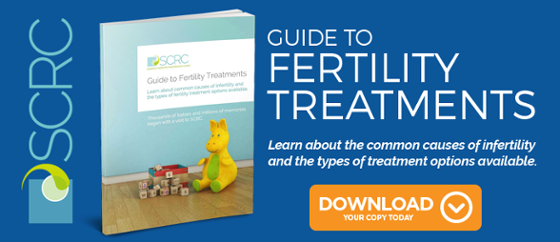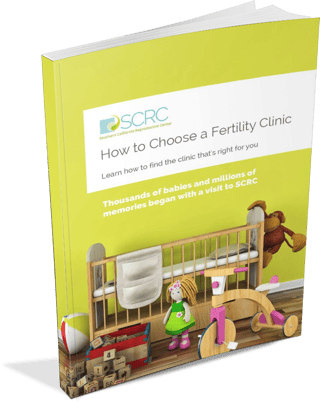
Some couples get pregnant on the first try. For about 85% of couples, pregnancy happens within a year. For everyone else, the path to parenthood is a little more complicated.
A diagnosis of infertility often comes unexpectedly and is often shocking and devastating for couples. For some, the shock is amplified by the fact that they’ve already had kids. Why are they struggling this time around?
For others it can be devastating to have intentionally avoided pregnancy and then be suddenly faced with the possibility of never becoming pregnant.
But there is hopeful news. A diagnosis of infertility does not necessarily a final destination. Infertility is, at its most basic level, an inability to conceive after trying for a certain period of time (6 months in women under 35 and 1 year in women over 35). At this point, if your insurance covers fertility treatments, you can start looking at options and starting treatment.
But, first things first. What exactly is the problem?
Why are we experiencing infertility?
Traditionally women have shouldered the burden of infertility. Statistically, though, men are equally likely to be infertile. Approximately one-third of the time, a physiological problem in the man causes infertility, and about one-third of the time it’s a physiological problem in the woman. About 10-20% of couples experience infertility arising from physiological causes in both. And sometimes, the cause is not clear.
Determining the cause of your infertility is essential to finding the appropriate treatment. Your doctor will order tests to pinpoint the cause and start you on your path to fertility (or return you to it). One of the first things your doctor will likely order is a semen analysis.
A semen analysis gives a detailed picture of sperm health, and three in particular: sperm count, motility (the sperm’s ability to propel itself forward) and morphology (shape of sperm’s head). The sperm count (or concentration) should ideally be above 15 million. Healthy sperm move 25 micrometers per second. Slow and non-moving sperm may be unable to reach the egg on their own. Ideally between 40% and 80% of sperm should be motile. The sperm’s shape is important in fertilizing the egg. Ideally, at least 14% of sperm in a sample should be morphologically normal.
One common cause of male infertility is Azoospermia. Sometimes a blockage within the male reproductive system prevents sperm from being released. Blockages can arise from congenital conditions or injury. Surgery can correct it. In nonobstructive azoospermia, there is no blockage but sperm are not being produced. The causes and treatments vary.
As with men, there are numerous root causes of female factor infertility. Many of the most common causes arise from issues related to ovulation. Unfortunately, it typically isn’t as straightforward as producing and analyzing a sample. Women typically undergo hormone testing to ensure that ovulation and other reproductive processes are happening as they should. Ultrasounds, exams, and x-rays will determine structural abnormalities of the cervix, uterus, ovaries and fallopian tubes, including the presence of cysts and/or other growths and blockages.
What can we do about it?
There is nothing easy about the journey of infertility. But regardless of the cause or treatments, one thing you can control that can have a huge impact on fertility is your lifestyle. Factors that negatively impact fertility include alcohol, smoking, stress, obesity, poor diet and lack of exercise. Eat more nutrient-dense food (and talk with your doctor about appropriate supplementation). Get moderate exercise every week (a 20-minute walk at the end of each day can do wonders for mental, physical and emotional wellbeing) and avoid alcohol and smoking. Studies show that these factors contribute to fertility (including boosting sperm health and hormone regulation) as well as the success of IVF.
One of the first steps is to set up a consultation at a fertility clinic. There are numerous options for getting pregnant and you want a clinic up on the latest advances in the field staffed with a team you trust. They’ll help you choose the best option for your family and support you it making it a reality.
Be sure to gather your friends and loved ones around, too. Infertility can be highly stressful and isolating. You’ll be glad for the extra support.
With your specialist, determine your options, including:
- Autologous treatment. Your doctor can help you determine if this option, which uses your own egg and sperm, is best for you.
- Egg/sperm donation. Your clinic can help you find and choose an appropriate donor, or you can choose a donor you know.
- Embryo donation. After IVF, couples are sometimes left with viable embryos. Similar to eggs and sperm, embryos can also be donated. Using a donor embryo is a form of adoption that allows you to start parenthood from conception. Some couples will be able to implant and carry, and others will require the use of a surrogate.
- Surrogacy. With a gestational surrogate, you provide the embryo (either by donor or of your own making). In this way, the surrogate has no biological relation to the child. This can be a good option for women who, for any reason, are not able to carry a pregnancy to term. In a traditional surrogate arrangement, the woman acting as the surrogate is also the egg donor. This may be a good option for couples with male factor infertility. Each state has its own laws regarding surrogacy, which you can read more about here. It’s important when choosing this option to talk it through thoroughly with your partner, lawyer and surrogate.
- Adoption. Many would-be parents turn to adoption to realize their dreams of family. For others, they prefer assisted reproductive technology. There is no wrong way to parenthood.
- Egg/sperm freezing. Sometimes infertility results from medical intervention such as cancer treatment. One hopeful option for couples is to freeze eggs/sperm/embryos prior to treatment (if possible). Chemotherapy drugs and radiation can irreparably damage eggs and sperm. Freezing prior to treatment can provide the option of IVF after treatment.
What’s next?
Infertility can feel hopeless, but the diagnosis is just the beginning. Talk with your doctor about the next steps, and find a good specialist that can help you determine the best course of action. Talk with your insurance provider to find out about their coverage of assisted reproductive technology.
As your next steps become clear, it’s easy to feel consumed by the process (and it is a process). Check in with yourself, your partner and your friends for support. And check out our website’s blog and resources to learn more about your options for building your family.
Share this on social media:






